By Level Legal
Project training should never be seen as optional. Mistakes made in a rush at this early stage often take more time and money to correct than if done right the first time. A thoughtful, thorough training session often means the difference between an efficient, successful project launch or suffering significant losses due to avoidable re-work.
Follow these guidelines to ensure that your project launch is successful:
1. Ask the review project manager for input on how to structure training. Every great teacher knows their subject matter and their students, and you know the facts of your matter better than anyone. However, as you prepare your presentation, don’t overlook the importance of knowing your review team, how they think, and what nuances they need to learn from you. Working with the team on the training structure, agenda, and content will ensure your expertise and expectations are delivered in the most beneficial manner possible.
2. Allow time for dataset sampling before the training session. Every thorough training session will include a discussion of sample documents. Discussing exemplar documents you hand-picked is incredibly beneficial, but time spent discussing records the team selected – from the final review set – can turn a helpful training session into an effective knowledge transfer. Help the team make practical sense of the review guidelines with the documents they feel will be most instructive.
3. Don’t underestimate the importance of context. Document review isn’t conducted in a vacuum, so don’t keep your review team operating on a need-to-know basis. Even if you can’t perceive a nexus between a certain case context and a coding decision, sharing the details is important. Good review attorneys will know how to ask questions that extract meaningful insight from your words. A deep dive into the controversy, parties, timeline, status, strategy, and goals will pay dividends as the review team conducts their analysis.
4. Explain how a document should be coded – and also explain why. As you walk through sample documents and discuss tagging preferences, be sure to explain how and why you arrived at your final decision. Highlight the content that influenced your analysis, distinguish the sample from other records, discuss applicable exceptions, and locate the document in the broader context of your matter. Your matter is nuanced, so take the time to help the team think about the documents the way you do.
5. Define coding guidelines by what does not qualify. Though you have clearly articulated your goals, optimize your guidelines by further explaining what should not qualify for a particular tag or document handling procedure. As the team conducts its analysis, having this critical information will allow them to distinguish targeted content from extraneous and will greatly aid as value judgments are made in the gray areas.
6. Sometimes the best answer is “I don’t know.” Thoughtful questions from the review team may raise issues that have not yet been contemplated and often impact more documents than anticipated. If a coding question can’t be answered with certainty based on case law, client preferences, or document-handling guidelines fully vetted by your team, take the time needed to give the team the right answers. Be particularly mindful of this tip when reasonable minds could differ or when document volume affected could impact the approach. Though pending questions are not ideal, time spent here is sure to save significant downstream effort if adjustments are required.
7. Communicate a clear protocol for the team to submit questions and provide prompt feedback. An effective review team should be generating questions early and often. Efficient information exchange is crucial to success, especially at the project’s outset. Based on your preferences and workload, work with the project managers to establish the most productive procedure for providing feedback and guidance to the review team.
8. View the review training session as part of a process, not as a stand-alone event. Following case-specific training led by your team, each review attorney will go through a calibration process specific to your matter. You provided the team with a solid foundation during training, but scheduling follow-up sessions with the project managers early in the review will ensure that questions are answered, guidelines are crystalized, and any required adjustments are addressed.
9. As instructions change, so should the review memo. To the extent the written background materials and oral feedback you provide may be in conflict, take the time to update the review memo or provide an addendum. Stay in control of your project by removing any potential for confusion about which instruction should apply.
Looking to partner with Level Legal? Contact us today.


